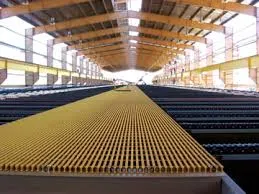
-
 Afrikaans
Afrikaans -
 Albanian
Albanian -
 Amharic
Amharic -
 Arabic
Arabic -
 Armenian
Armenian -
 Azerbaijani
Azerbaijani -
 Basque
Basque -
 Belarusian
Belarusian -
 Bengali
Bengali -
 Bosnian
Bosnian -
 Bulgarian
Bulgarian -
 Catalan
Catalan -
 Cebuano
Cebuano -
 China
China -
 China (Taiwan)
China (Taiwan) -
 Corsican
Corsican -
 Croatian
Croatian -
 Czech
Czech -
 Danish
Danish -
 Dutch
Dutch -
 English
English -
 Esperanto
Esperanto -
 Estonian
Estonian -
 Finnish
Finnish -
 French
French -
 Frisian
Frisian -
 Galician
Galician -
 Georgian
Georgian -
 German
German -
 Greek
Greek -
 Gujarati
Gujarati -
 Haitian Creole
Haitian Creole -
 hausa
hausa -
 hawaiian
hawaiian -
 Hebrew
Hebrew -
 Hindi
Hindi -
 Miao
Miao -
 Hungarian
Hungarian -
 Icelandic
Icelandic -
 igbo
igbo -
 Indonesian
Indonesian -
 irish
irish -
 Italian
Italian -
 Japanese
Japanese -
 Javanese
Javanese -
 Kannada
Kannada -
 kazakh
kazakh -
 Khmer
Khmer -
 Rwandese
Rwandese -
 Korean
Korean -
 Kurdish
Kurdish -
 Kyrgyz
Kyrgyz -
 Lao
Lao -
 Latin
Latin -
 Latvian
Latvian -
 Lithuanian
Lithuanian -
 Luxembourgish
Luxembourgish -
 Macedonian
Macedonian -
 Malgashi
Malgashi -
 Malay
Malay -
 Malayalam
Malayalam -
 Maltese
Maltese -
 Maori
Maori -
 Marathi
Marathi -
 Mongolian
Mongolian -
 Myanmar
Myanmar -
 Nepali
Nepali -
 Norwegian
Norwegian -
 Norwegian
Norwegian -
 Occitan
Occitan -
 Pashto
Pashto -
 Persian
Persian -
 Polish
Polish -
 Portuguese
Portuguese -
 Punjabi
Punjabi -
 Romanian
Romanian -
 Russian
Russian -
 Samoan
Samoan -
 Scottish Gaelic
Scottish Gaelic -
 Serbian
Serbian -
 Sesotho
Sesotho -
 Shona
Shona -
 Sindhi
Sindhi -
 Sinhala
Sinhala -
 Slovak
Slovak -
 Slovenian
Slovenian -
 Somali
Somali -
 Spanish
Spanish -
 Sundanese
Sundanese -
 Swahili
Swahili -
 Swedish
Swedish -
 Tagalog
Tagalog -
 Tajik
Tajik -
 Tamil
Tamil -
 Tatar
Tatar -
 Telugu
Telugu -
 Thai
Thai -
 Turkish
Turkish -
 Turkmen
Turkmen -
 Ukrainian
Ukrainian -
 Urdu
Urdu -
 Uighur
Uighur -
 Uzbek
Uzbek -
 Vietnamese
Vietnamese -
 Welsh
Welsh -
 Bantu
Bantu -
 Yiddish
Yiddish -
 Yoruba
Yoruba -
 Zulu
Zulu
frp sheet
Understanding FRP Sheets Versatile Composite Materials for Modern Applications
Fiber Reinforced Polymer (FRP) sheets are gaining significant attention across various industries due to their remarkable properties and versatility. Composed of a polymer matrix reinforced with fibers—such as glass, carbon, or aramid—FRP sheets possess a unique combination of strength, lightness, and resistance to environmental degradation. This article aims to delve into the characteristics, advantages, and applications of FRP sheets, highlighting their role in modern engineering and construction.
One of the most notable features of FRP sheets is their high strength-to-weight ratio. Compared to traditional materials like steel and concrete, FRP sheets are significantly lighter while maintaining comparable or even superior strength. This quality not only facilitates easier handling and installation but also allows for the design of more complex structures without excessive weight burdens. The lightweight nature of FRP sheets is particularly beneficial in sectors such as aerospace, automotive, and marine, where material weight is a critical consideration.
.
Another advantage of FRP sheets is their versatility in terms of design and customization. Manufacturers can create FRP sheets in various shapes, sizes, and colors to meet specific project requirements. The ability to tailor the material properties—such as stiffness and flexibility—allows engineers to enhance the performance characteristics of structures. Furthermore, FRP sheets can be easily molded and shaped, enabling creative architectural designs that are both functional and aesthetically pleasing.
frp sheet

The application of FRP sheets is vast and spans multiple fields. In the construction industry, they are increasingly used for strengthening existing structures, such as bridges and buildings. By applying FRP sheets to structural elements, engineers can increase load-bearing capacity, enhance seismic performance, and extend the lifecycle of structures without extensive renovations. Additionally, FRP sheets are used in new constructions, including facades, roofing systems, and flooring, due to their lightweight and durable nature.
In transportation, FRP sheets are transforming vehicle design and manufacturing. Their lightweight properties contribute to improved fuel efficiency and performance while also providing crash resistance. In aviation, manufacturers are integrating FRP sheets into aircraft components to reduce weight, thus enhancing overall efficiency and reducing operational costs.
In the energy sector, FRP sheets play a pivotal role in the development of renewable energy technologies. They are widely used in wind turbine blades, where their strength and lightness contribute to improved aerodynamic performance. Furthermore, FRP composites are used in solar panel frames and other equipment, ensuring durability and resistance to environmental conditions.
In conclusion, FRP sheets are a game-changing material with a multitude of applications across various industries. Their exceptional strength-to-weight ratio, corrosion resistance, and design flexibility make them an invaluable resource in modern engineering and construction. As technology advances and the demand for sustainable, efficient materials increases, FRP sheets are poised to play an even more significant role in shaping the future of structural design and innovation. Whether in reinforcing existing infrastructures or creating new, lightweight solutions, FRP sheets are undeniably at the forefront of modern material science.









